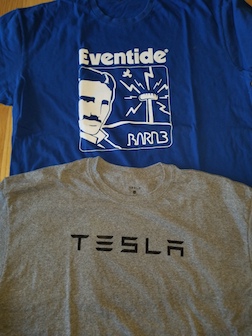RIKLReviewTM - Tesla Powerwall 2, Part 2
A Funny Thing Happened on the Way to This Blog
Literally minutes after I posted Part 1 of this review, I sustained an email from my Tesla sales support specialist. It asserted, in part, the following:
The Time Of Use update is being rolled out across our customer base right now, and everyone should have access to these features by April 20th.
Our subsequent correspondence elicited some details of the new app, including this:
Cost Saving – This is preferred for customers who are trying to save as much money as possible on their Time Of Use utility plan. This will charge your system from the grid during off peak rate times and discharge to your home during on peak rate times based on the time settings you input. This allows you to save on high utility costs. This is not the ideal choice for those who are simply looking to reduce their carbon footprint as this relies heavily on the grid. Still in this case, saving back-up power is highly recommended.
Since this is precisely what I wanted and was whining about not having, I hereby tentatively withdraw all complaints or requests until I get the new app and confirm it does what I need. Of course I do have a new complaint: APRIL 20th? How long does this rolling take? Is it being propelled by a sloth? Anyway, having waited years, another month isn't the end of the world or even the eruption of a supervolcano. I'll hold my peace until I get it.
Economics
My original plan for this blogitem was to analyze my kWh data for a significant period, and see just how well I could "justify" my Powerwall installation. I am normally homo economicus with purchases of all sorts, including those of only a few dollars or sometimes even pennies. (Translation: I'm cheap.) But, as I mentioned recently, "I love electricity," and I don't necessarily require myself to be strictly objective with this type of purchase. (Translation: Buy first, justify later.) I'm also honest enough that if my justification doesn't work out, I admit it.
Until I had the Powerwalls installed, I could only guess if and how much money they would save on electric bills. Now that they have been installed, I realize that it will take me a lot longer than these few days to come up with realistic figures. Since I wanted to postempt my whining in the previous blog promptly, the guesses below are just that. Theory today, practice "tomorrow."
My three-Powerwall installation cost $20k. My electricity costs about four times as much during peak periods as it does off-peak. Let's say $.28 vs. $.07 per kWh*. Peak charges are incurred from noon until 19:00, five days per week minus about 6 holidays. That's 254 days per year * 7 hours/day or 1778 hours. So, for all of those hours, assuming the Powerwalls can save me $.21 per kWh, that's $373 per kW that the house consumes during that period. Until I had the Powerwall app, I really had no good way to determine consumption beyond checking my utility bill and subtracting from that my solar system output, which I will have neglected to do for the past full year and remedy in the future.
The above is best case. There are any number of second order calculations (e.g., efficiency, outside temperature, travel) that can and will make it worse. The only way I can save more is if the electric company raises its rates! Not hoping for that, I apply a "fudge factor" (that's me!) to the above and declare that maybe it's closer to $250 per kWh. So, for an average housal consumption during the afternoon/evening of, say, 4kWh, the Powerwalls, for my $20k cost, will deliver me $1000 worth of savings per year. In accordance with my previous thoughts about the economics of solar, that translates to an interest rate on my "investment" of 5%. Not great, but better than a savings account by far!
I embarrass myself by using so many unjustified approximations. Badger me in a year for more precise annual figures; meanwhile I shall enjoy my somewhat cheaper electricity and my (free!, considering) home backup capability. As for the embarrassment, I'll somehow cope.
*These numbers change a bit between summer and winter, and are also approximations in any event.


